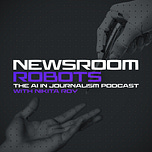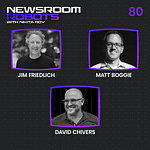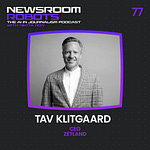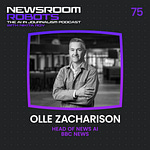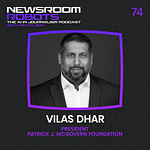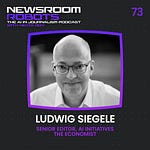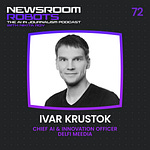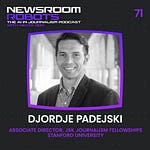This past week has been a whirlwind in the AI world, especially with the dramatic developments at OpenAI, the company behind ChatGPT. Sam Altman, co-founder and CEO of OpenAI, was initially fired from his position on Friday, Nov. 17, with the board citing that he was “not consistently candid in his communications with the board, hindering its ability to exercise its responsibilities.” However, after a turbulent few days marked by threats of mass resignations from OpenAI staff, Altman was reinstated as CEO. Here's a detailed timeline breakdown from Axios on what unfolded.
As I went into Wednesday's recording with renowned tech innovator Simon Willison, who is the co-creator of the Django web framework and a prominent advocate for open-source software development, our goal was to dissect the key takeaways from OpenAI's explosive saga and its implications for the AI industry. Since the recording, more details have emerged, shedding light on the past week's events. Reports have surfaced about OpenAI researchers warning the board of directors about an advanced system known as Q*. This model is capable of solving math problems and has superior reasoning skills, a big step up from older models that struggle with processing abstract concepts. This significant AI development prompted concerns that the new breakthrough could pave the way for AGI and contributed to the initial dismissal of Sam Altman as CEO of OpenAI.
I invited Simon to join me on the podcast to delve deeper into this month's news from OpenAI, including the boardroom drama and the unveiling of new features.
Simon is the creator of Datasette, an open-source data exploration and publishing tool. A former software architect at The Guardian and JSK Fellow at Stanford University, Simon currently works on building open-source tools for data journalism. Before becoming an independent open-source developer, Simon was an engineering director at Eventbrite. He is also renowned for his work as the co-creator of the Django Web Framework, a key tool in Python web development.
This is part one of a two-part episode. Here are the key topics we discussed in the episode:
1️⃣ Exploring New Capabilities from OpenAI: We break down all the new OpenAI features, including the GPT-4 Turbo model for processing larger documents, Whisper 3 for advanced speech-to-text, use cases for building GPTs (a customizable form of ChatGPT), an Assistant API for chatbots, GPT Vision API for image analysis, and what an OpenAI GPT store means for the industry.
2️⃣ Mitigating Security Risks in Generative AI Apps: Simon discusses "prompt injection," a term he's known for coining to describe a security vulnerability in large language models (LLMs), where attackers can craft prompts to manipulate model responses, leading to unauthorized access or data manipulation. This challenge remains unsolved, hindering the safe development of generative AI applications.
3️⃣ Leveraging Small Language Models: We explore the potential for small language models that journalists can run on their own devices for analyzing sensitive data, avoiding reliance on external cloud platforms. His new open-source LLM Python library makes experimenting locally with models like Meta's LLaMA easy.
In part two next week, Simon will share more on the data journalism tools he's building to empower journalists.
🎧 Check out this episode on your preferred podcast platform.
🔔 Course registration is now open for the Newsroom Robots X Wonder Tools Generative AI for Media Professionals Masterclass
I’ll be co-teaching this course with Jeremy Caplan, the author of Wonder Tools and the Director of Teaching and Learning at the Craig Newmark Graduate School of Journalism. We’ve designed this course to empower media professionals to harness generative AI effectively. It builds on the experiences from previous Generative AI workshops I've conducted at institutions, including the University of Toronto, the Craig Newmark Graduate School of Journalism at the City University of New York, and the International Center for Journalists. Sign up now.

